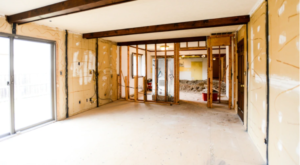Do’s & Don’t of DIY Renovating
COVID-19 saw many of us spending more time in our homes and daydreaming of ways in which we could improve them. While we all like to think that we are super handy around the house, the truth is that there are some things that really should be left to the experts. In saying this, with the right tools and precautions there are ways in which you can manage a successful renovation. We have compiled a list of home renovation tips and tasks that you can take on yourself, and the ones that are best left to the pros!
Don’t…
Overcapitalise
It is easy to get carried away when you are on a renovating-roll, but whether you plan on living in your home for the foreseeable future or you’re renovating to sell, it is imperative that you don’t spend more than you will realistically be able to recoup. A few key aspects to take into consideration when identifying what this is include median housing values within your suburb, the demographic that will be your most likely buyer/tenant and the impact that the renovation will have on the overall appeal of your property.
Attempt plumbing or electrical
When you attempt extensive technical work on your property such as plumbing and electrical, you are not only risking having to pour even more money into the project later, but more importantly the safety of yourself and others. There is a reason that certain tasks require professionals with training and apprenticeships, so even if you are sticking to a strict budget, this is not the area to scrimp on. While we do not recommend trying to complete jobs such as tiling, electrical, plumbing and plastering, there is the opportunity to get your hands dirty with tasks like painting, demolition (supervised of course!) and project managing to ensure all materials arrive on time.
Underestimate
TV shows make renovating look glamorous and rewarding, but in reality, it can be just the opposite! If you go into a project without a clear understanding of the time and work that is required, you may become frustrated and as a result, cut corners and make rash decisions in an attempt to speed up the process. Renovations are time consuming, hard work and often don’t go to plan, but being well-prepared and having a plan of how to combat issues when they inevitably arise makes for a smoother process. It can be helpful to speak with professional builders to understand the timeline of your project and prepare you for exactly what it is that you are committing to.
Do…
Plan ahead
Renovations are stressful, but there are procedures that you can put in place to make it slightly less so. In the preliminary stages, set a budget and a budget buffer that is 15-20% higher to cover unforeseen costs and as a contingency plan. Some of the more obvious decisions you will be required to make include design concepts, hiring of tradespeople and organising a schedule/timeline, but some of the less obvious things to put on your to-do list include…
- Contacting your neighbours to warn them of any upcoming disruptions
- Contacting Dial Before You Dig to prevent damage to underground network cabling
- Check the zoning of your property with your local council (even for smaller jobs)
- Confirm that the design/measurements of your brick, timber or tiles are available if you plan on continuing with an original style/type/pattern
Choose quality
Australian homes are renovated every 15-20 years on average, so when you are making decisions for building materials, appliances and services, keep this timeline in mind. Over the life of your home, the appliances will be used thousands of times and selecting quality will save you time and money in the long run. Do your research, read reviews, and take recommendations on the best in the biz and you won’t have to think about it again for at least the next few decades. Tapware, flooring, cabinets and surfaces are among the elements that you should leave off your penny-pinching list!
Keep it classic
Everyone wants to live in a home that has their own personal touch, but keep in mind that your style may not necessarily be the next occupants cup of tea. A few key rules to follow are limiting yourself to two main colours and one finish to create a cohesive look throughout the property. Avoid any trends that are too outlandish, especially on permanent fixtures of the home and instead display your unique style with easily interchangeable elements such as furnishings and accessories or hire a stylist to assist you with implementing your vision in a practical way.



